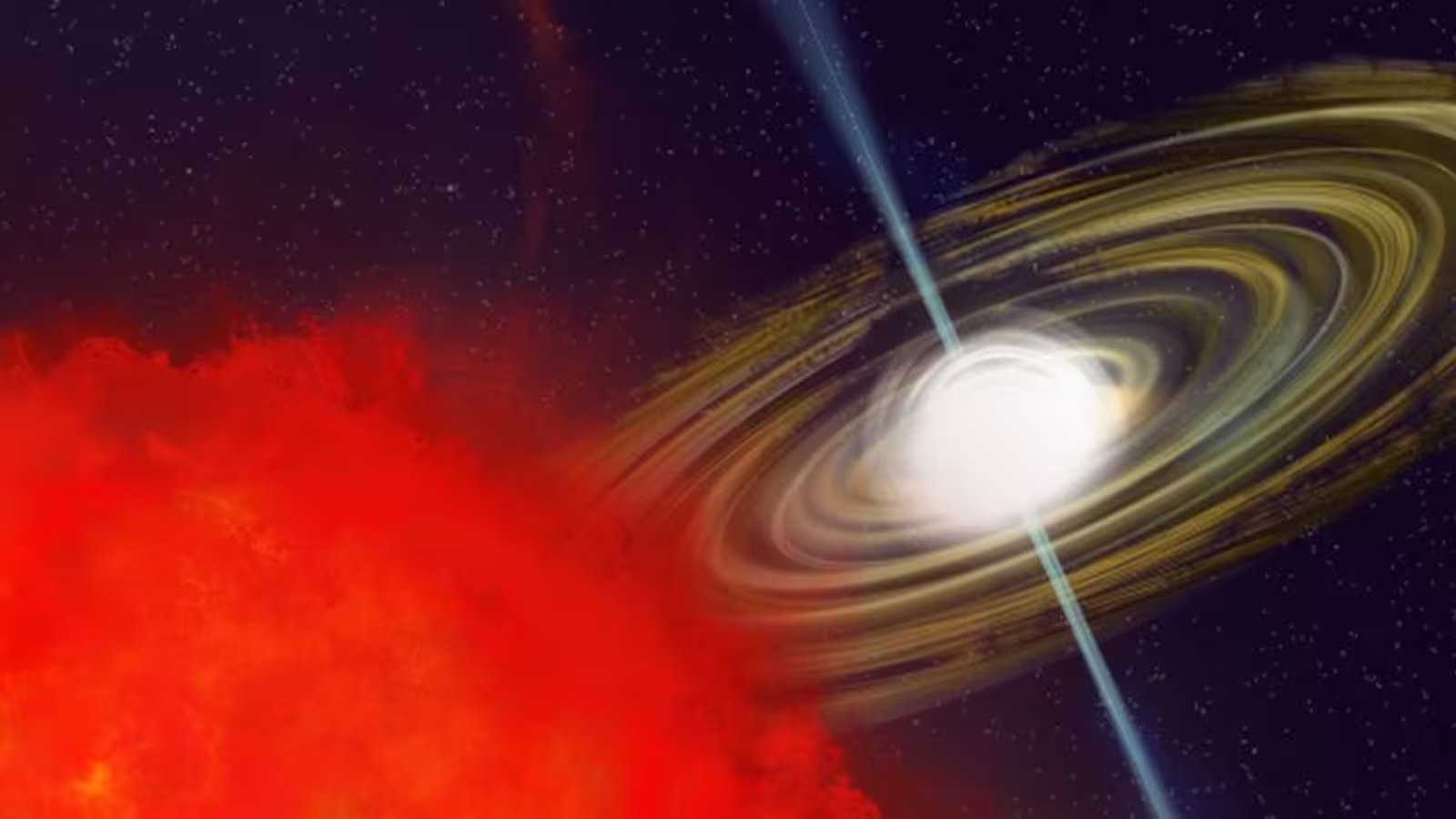5 Minutes
An Unprecedented Discovery: CHIME J1634+44 Shines in the Milky Way
Astronomers have reported the discovery of CHIME J1634+44, a highly unusual cosmic object distinguished by its dramatic and mysterious blinking behavior. Situated thousands of light-years away within our Milky Way galaxy, this newly observed source belongs to a rare category known as long-period transients (LPTs) — celestial bodies that emit flashes of radiation at long, unpredictable intervals.
While only about a dozen LPTs have been cataloged so far, CHIME J1634+44 stands out as a singular entity among these enigmatic sources. Its light not only varies over especially lengthy periods, but it also exhibits the highest degree of polarization ever measured for such an object, suggesting an extremely complex surrounding environment.
Investigating the Signals: Two Periods and Increasing Spin
A defining feature of CHIME J1634+44 is its peculiar pulsing behavior. The object emits recurrent bursts of radio waves at two distinct periods: one recurring every 14 minutes (841 seconds), and a second, notable period precisely five times longer at 70 minutes (4,206 seconds). This regularity hints at a complex system dynamic, potentially involving two interacting celestial bodies.
What makes CHIME J1634+44 even more extraordinary is that the intervals between its pulses are slightly shortening over time—contrary to the norm, where such periodic signals tend to slow as the objects lose rotational energy. This behavior indicates that the source is spinning up, possibly due to the accumulation of new material or energy from a nearby companion.
“The source’s combination of periods makes it truly unique, even among LPTs,” explains Dr. Fengqiu Adam Dong of the Green Bank Observatory, lead author on one of the newly published studies.
Decoding the Nature of Long-Period Transients
Long-period transients like CHIME J1634+44 are believed to originate from extremely compact stellar remnants—either white dwarfs or neutron stars. These are the dense cores left behind after certain stars exhaust their nuclear fuel and shed their outer layers.
White dwarfs, which can reach up to 1.4 times the mass of our Sun yet be compressed to a size between that of Earth and the Moon, resist further collapse thanks to electron degeneracy pressure—a quantum principle that prohibits electrons from occupying the same state. More massive remnants surpassing this threshold become neutron stars: objects with the mass of about 2.3 Suns packed into a sphere only 20 kilometers (12 miles) wide, stabilized by neutron degeneracy pressure.
In binary systems, where these compact objects interact with close companions, dramatic phenomena can result—such as accretion of material, intense flares, and rapid changes in spin.
Competing Theories: Is It a Neutron Star or a White Dwarf?
The true identity of CHIME J1634+44 remains at the center of expert debate. Dong’s team, citing the object’s radio bursts and accelerating spin, interprets the data as characteristic of a neutron star, possibly behaving as a pulsar—a rapidly rotating neutron star known for emitting beams of radio waves at precise intervals. Pulsars are also known for occasional spin-up episodes, generally driven by the transfer of mass from a companion.
On the other hand, a second independent study led by Dr. Sanne Bloot from the Netherlands Institute for Radio Astronomy offers compelling evidence for an alternative scenario. Their observations uncovered a faint ultraviolet source at the location of CHIME J1634+44, consistent with the presence of a white dwarf of approximately 78% the mass of the Sun and boasting a surface temperature between 15,000 and 33,000 Kelvin. If correct, this would point to CHIME J1634+44 as a white dwarf pulsar—a rare and elusive analog to the better-known neutron star pulsars.
A Blueprint for Future Research and the Role of Polarization
One particularly striking property of CHIME J1634+44 is the perfect circular polarization of its radio pulses—a phenomenon not previously observed in any LPT. This novel signature raises the possibility that the processes producing these signals are fundamentally different from those discovered in other known stellar remnants.
To conclusively unravel the nature of CHIME J1634+44, astronomers are planning additional multi-wavelength observations and theoretical modeling. The object’s mysterious double periods, accelerating spin, and record-breaking polarization collectively challenge established models of stellar evolution and compact object behavior.
“The discovery of CHIME J1634+44 expands our understanding of long-period transients and raises new questions about the underlying physics of neutron stars and white dwarfs,” says Dr. Dong. “It’s very likely that many more such unique objects await discovery in our galaxy.”
The findings from Dong’s research team appear in The Astrophysical Journal Letters, while Bloot’s team’s detailed analysis has been accepted for publication in Astronomy & Astrophysics and is currently available via arXiv.
Conclusion
The unveiling of CHIME J1634+44 as a remarkable, blinking „unicorn“ object marks a milestone in the study of extreme cosmic phenomena. Whether this source ultimately proves to be a rare white dwarf pulsar or an exotic neutron star companion, its discovery invites a re-examination of the mechanisms driving stellar remnant evolution and binary system interactions. As scientists continue to observe and decode these enigmatic transients, CHIME J1634+44 is poised to expand our window into the dynamic and diverse nature of our galaxy’s most compact stellar remnants.
Source: sciencealert



Comments